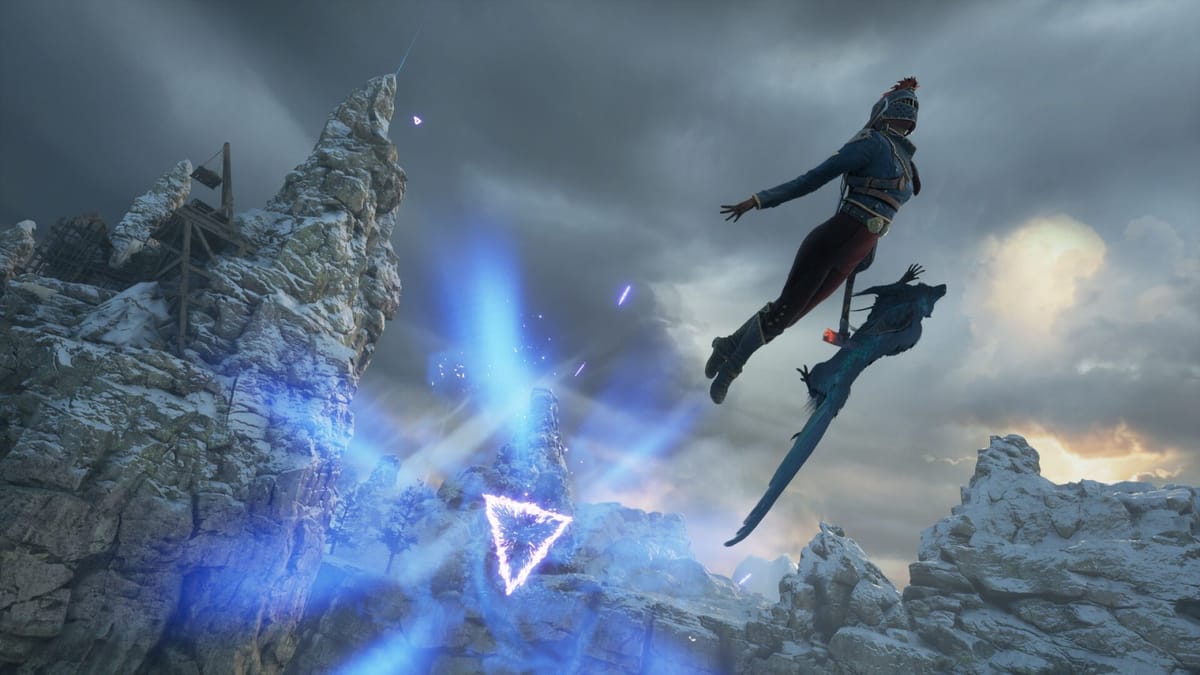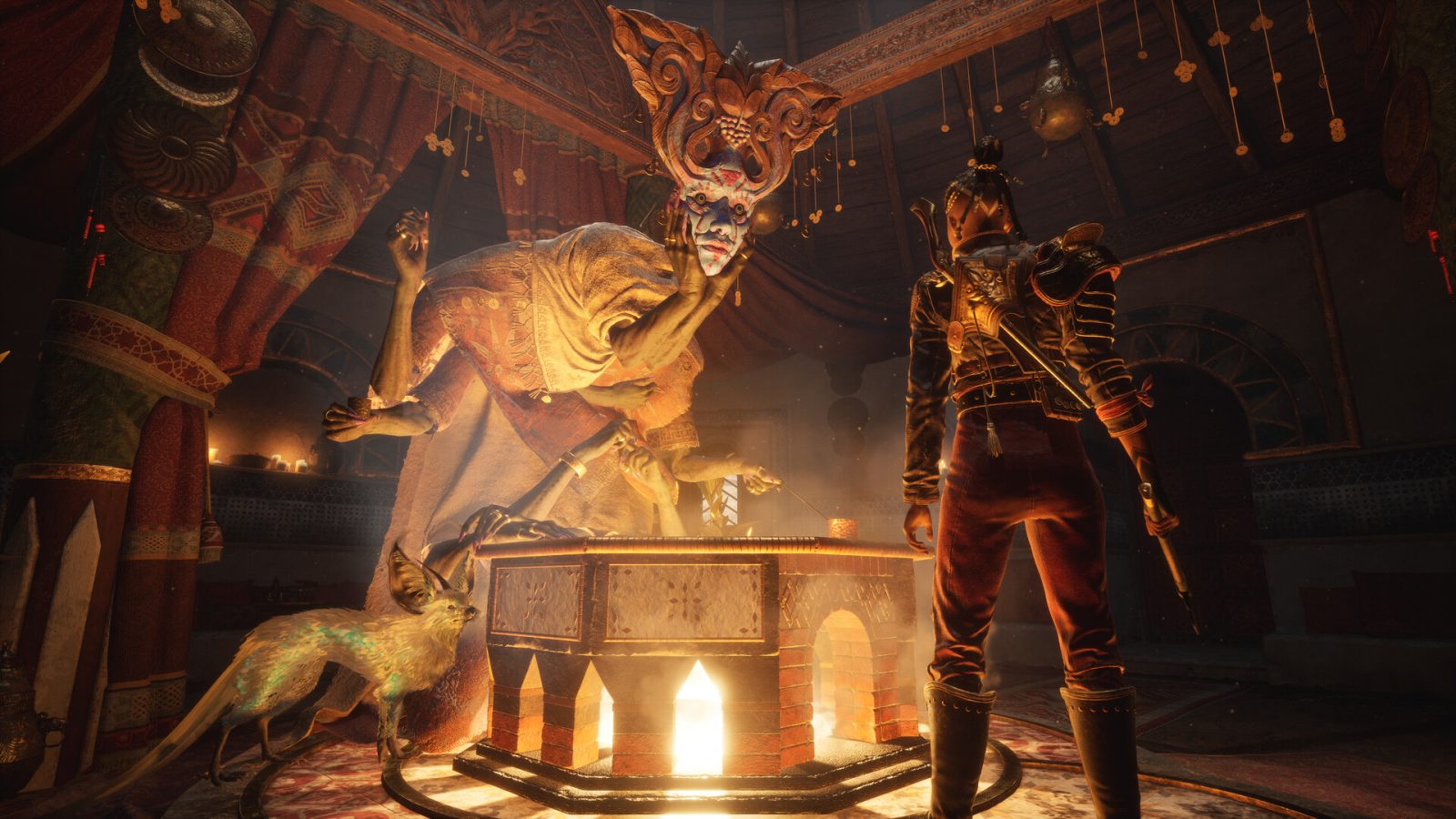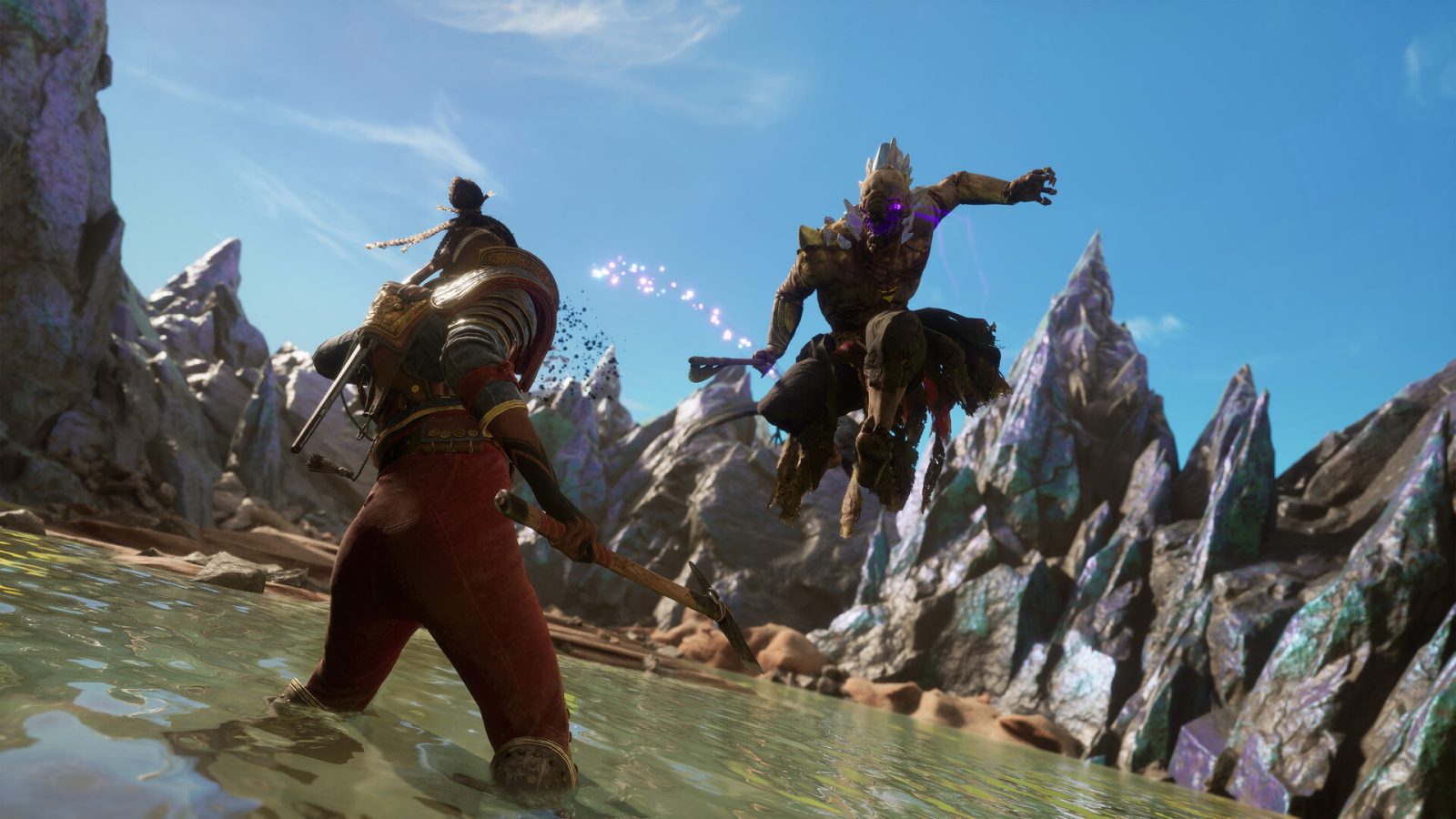
After playing A44’s cooperative focused Souls-like Ashen, I couldn’t help but wait for the team’s next big project, Flintlock: The Siege of Dawn. Announced back in 2022 to be released that same year, the game has seen multiple delays and setbacks, but is now finally releasing halfway through 2024 on next generation consoles. Does this title make it on the best Souls-like list or does it get lost in a sea of imitators of FromSoftware’s tried and true genre?
Flintlock is set in the fictional world of Kian, a land besieged by the forces of the Gods and their armies of the dead. The narrative centers around Nor Vanek, an elite member of the Coalition army. The story begins with the opening of the Door to the Great Below, which unleashes the Gods and their undead armies upon the world. The city of Dawn, a crucial stronghold for humanity, is on the brink of destruction. Nor, along with her mystical fox-like companion Enki, embarks on a perilous journey to close the door, defeat the Gods, and reclaim the world for humanity.
Gameplay is a mixed bag between janky floaty platforming and mediocre “Souls-lite” combat. Nor has access to a sprint, jump, parry, dodge, light melee attack, and ranged attack from her firearm. After you meet Enki, the mysterious fox-like spirit, you’ll gain access to a double jump and aerial dodge that must be used to traverse the different platforms throughout the overworld. I can’t put my finger on it but the jump and dodge feels off – mostly due to the delay and floatiness of both. This combined with the inaccuracies and poorly labeled edges makes some platforming sections a headache. There will also be portal-like glow points that Enki can teleport you through, but these are all quite linear and a straightforward button press.
Progression comes through a skill tree split between power (ranged damage), magic (Enki’s damage), and steel (melee damage). The aforementioned double jump and aerial dodge are unlocked from this tree, but there’s also other cool abilities such as charging up a shot from your pistol, increasing the effectiveness of healing potions, or deflecting enemy projectiles with a well timed block. Various weapons and armor are scattered throughout the world in treasure chests, so you are rewarded if you go off the beaten path to explore. Thankfully there are plenty of fast travel points to Lodestones (bonfire equivalent) and campfires. Your companions and friends also show up at the campfires where you can speak to them to upgrade your gear or play Sebo.

What’s Sebo you might ask? It’s the sole minigame introduced in this game that can be played with a variety of characters throughout your journey. It’s a tic-tac-toe-like game where players must form a triangle rift in the least number of turns. Players take turns playing attack and defense to either form the triangle or prevent the opponent from forming it. Special coins can be found throughout the world that give you an upper hand during matches such as allowing you to play a coin anywhere on the board. This minigame is quite novel at first but gets boring quickly, and the only reward you get from playing are Reputation points.
Flintlock differentiates itself from the typical Souls experience in the form of Reputation. Think of Reputation as the Souls currency needed to level up, except there’s no leveling up in this game. You use Reputation to purchase weapon and gear upgrades as well as unlocking nodes on the skill tree. You earn Reputation from defeating enemies, with a higher bonus percentage of Reputation earned from not getting hit by enemies. You can choose to bank the bonus amount or risk losing the bonus percentage if you do get hit. However, if you die, then you drop all of your Reputation like you would in a Souls game and must pick it up again.

You can equip a helmet, shoulder pads, and gauntlets which serve as your armor slots. Wearing armors of the same type provides a nice set bonus. The rest of your outfit is your trousers and jacket, both of which serve as cosmetics. You can purchase different color and pattern schemes at shops. In terms of weapons, you can equip two axes that you can switch on the fly, one pistol, and two long range guns, such as a musket, mortar, or cannon. There’s also, of course, refillable healing potions that can be increased from liberating small towns throughout the overworld (think Ubisoft checklist type activities). Enki serves as a secondary companion to you in combat as well, and can be equipped with different Mythical Witherings (think of this as an ultimate) and cursed stones that provide different debuffs on enemies. Enki inflicts death on your opponents, which in turn fills up a sort of stagger bar that can be used to execute enemies once filled.
So how’s the combat? Yes it’s a Souls-lite action game but much jankier and quite unpolished. Hitboxes are often unreliable and there’s close to no impact or feedback from any of your attacks, other than incessant rumbling from your controller. What makes things worse is that there is no animation canceling, meaning if you commit to an attack, then there’s no way to switch to a block or a dodge. Souls games should be a rhythmic experience of learning an enemy’s attack pattern and behavior and then reacting accordingly. But Flintlock’s enemy AI either takes a beating from my ax without any reaction or continuously bombards me with attacks. There is no in between. Things get worse with the final boss of the game, who is one of the most poorly designed bosses I’ve ever seen as it just spams the same moves across multiple phases.

Flintlock clocks in at a mere 16.32 GB on the PlayStation 5, which is quite compact for action role playing games nowadays. Load times are serviceable, but nothing to write home about, taking around 6-7 seconds to load in from the main menu. Two graphical modes are offered, one for performance and one for quality. The visual fidelity upgrade that quality mode provides is not noticeable enough to sacrifice the 60 fps goodness that performance mode gives. For the most part, the game is quite consistent with its framerates, with some slight dips to the low 50s during intense combat moments. While there are no game breaking bugs or glitches, there are plenty of moments where in-combat hit boxes don’t match the situation visually or NPCs get stuck in terrain. I had a guy walking in the grass stationary for a good 2 minutes until I left. Lip syncing animations could also use some work.
A photo mode is provided at launch for those that take comfort in snagging aesthetic pictures of in-game sequences. In terms of accessibility, there’s the standard suite of settings that one might expect with subtitles and text size and all, but there’s also one for blood effects and rebinding controls, which is a huge plus. You can choose between three difficulty modes: Story, Normal, and Possessed, all of which can be changed mid-game as well. However, it was a baffling design decision to lock all trophies out if you decide to play on Story mode. You will earn exactly zero achievements if you decide to go with the easiest difficulty, even if you change back to Normal or Possessed midway through.

My biggest gripe in terms of technical performance is the poor audio quality and balancing, specifically revolving dialogue and background noise. The music is way too loud and you can barely hear the effects of combat and dialogue, even when you tweak it in the settings. If it weren’t for the subtitles, I wouldn’t have even been able to hear that someone was talking sometimes. This unbalance also plays negatively into the combat encounters, as this is an action heavy game. Being unable to hear the ebb and flow of the fight makes the overall experience worse than it already is. Speaking a little about the visuals of the game — there’s a weird haziness filter over the graphical presentation, which in turn makes everything a little bit blurry, which I also wasn’t a fan of.
There is no New Game Plus at launch, as you will load in right before the final boss after beating the game. On top of that, the game is extremely short, as I took around 4 hours to beat it,\ while doing some of the side quests and activities here and there. There’s a total of three open-world areas to explore — Three Peaks, Wanderer’s Rest, and Dawn — in addition to 11 main quests, and only 4 main bosses (including the final boss). If you took your time doing everything, you’d probably get around 10 hours in. For a game that has been in development hell and delayed for 2+ years, I guess I expected a lot more content and polish coming from the creators of the beloved Ashen.
Flintlock: The Siege of Dawn
All Right
Flintlock: The Siege of Dawn is by no means a bad game, but in a sea of other Souls copycats, this one does very little to stand out. Put into the perspective of its multiple delays and overall unpolish, it’s clear that this is an easy skip to play better options out there. Or at least wait until it's heavily discounted…
Pros
- Interesting narrative
- Reputation system is cool
- Rewarding exploration
Cons
- Glaring audio issues
- Unpolished combat and floaty platforming
- Hazy visuals
- Extremely short
